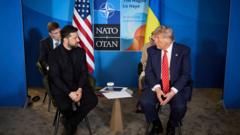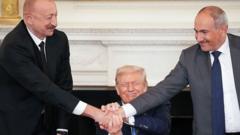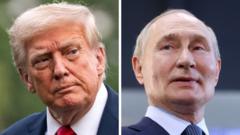Germany has announced a significant increase in military and infrastructure spending, raising military investment to 3.5% of its GDP by 2026 as part of a broader economic recovery strategy amid international defense pressures.
Germany Boosts Military and Infrastructure Spending Amid NATO Pressure

Germany Boosts Military and Infrastructure Spending Amid NATO Pressure
Germany's budget announcement promises increased funding for military and infrastructure before a crucial NATO meeting.
Germany is making headlines this week, revealing a groundbreaking budget aimed at revitalizing its military and public infrastructure. In a move that underscores a pivotal shift in national investment strategy, the federal government plans to increase military spending to 3.5% of GDP by 2026, as championed by Finance Minister Lars Klingbeil. This decision comes on the heels of mounting pressure from NATO members, particularly the United States, during a crucial meeting in The Hague where an anticipated agreement to elevate military spending to 5% of GDP is expected.
For years, Germany has lagged in military expenditure and public infrastructure investments compared to its NATO allies. Citing historical underinvestment, Klingbeil pointed to the need for a "paradigm shift in investment policy" to address both security and economic concerns. This proposed budget, which heavily relies on borrowing, allocates a staggering €62.4 billion (approximately $134 billion) for military purposes as part of a larger €115.7 billion investment push aimed at invigorating the sluggish economy.
The German government is set to incrementally increase military funding through 2029 to meet the NATO benchmark that the Trump administration had heavily advocated for, reflecting a direct response to heightened tensions with Russia and calls for increased defense readiness. As Germany solidifies its commitment to upgrading its military capabilities, the nation is simultaneously addressing its aging infrastructure, bridging a long-neglected gap. With these strategic financial decisions, the country appears determined to reclaim its role as a key player on the European and global defense landscape.
For years, Germany has lagged in military expenditure and public infrastructure investments compared to its NATO allies. Citing historical underinvestment, Klingbeil pointed to the need for a "paradigm shift in investment policy" to address both security and economic concerns. This proposed budget, which heavily relies on borrowing, allocates a staggering €62.4 billion (approximately $134 billion) for military purposes as part of a larger €115.7 billion investment push aimed at invigorating the sluggish economy.
The German government is set to incrementally increase military funding through 2029 to meet the NATO benchmark that the Trump administration had heavily advocated for, reflecting a direct response to heightened tensions with Russia and calls for increased defense readiness. As Germany solidifies its commitment to upgrading its military capabilities, the nation is simultaneously addressing its aging infrastructure, bridging a long-neglected gap. With these strategic financial decisions, the country appears determined to reclaim its role as a key player on the European and global defense landscape.



















